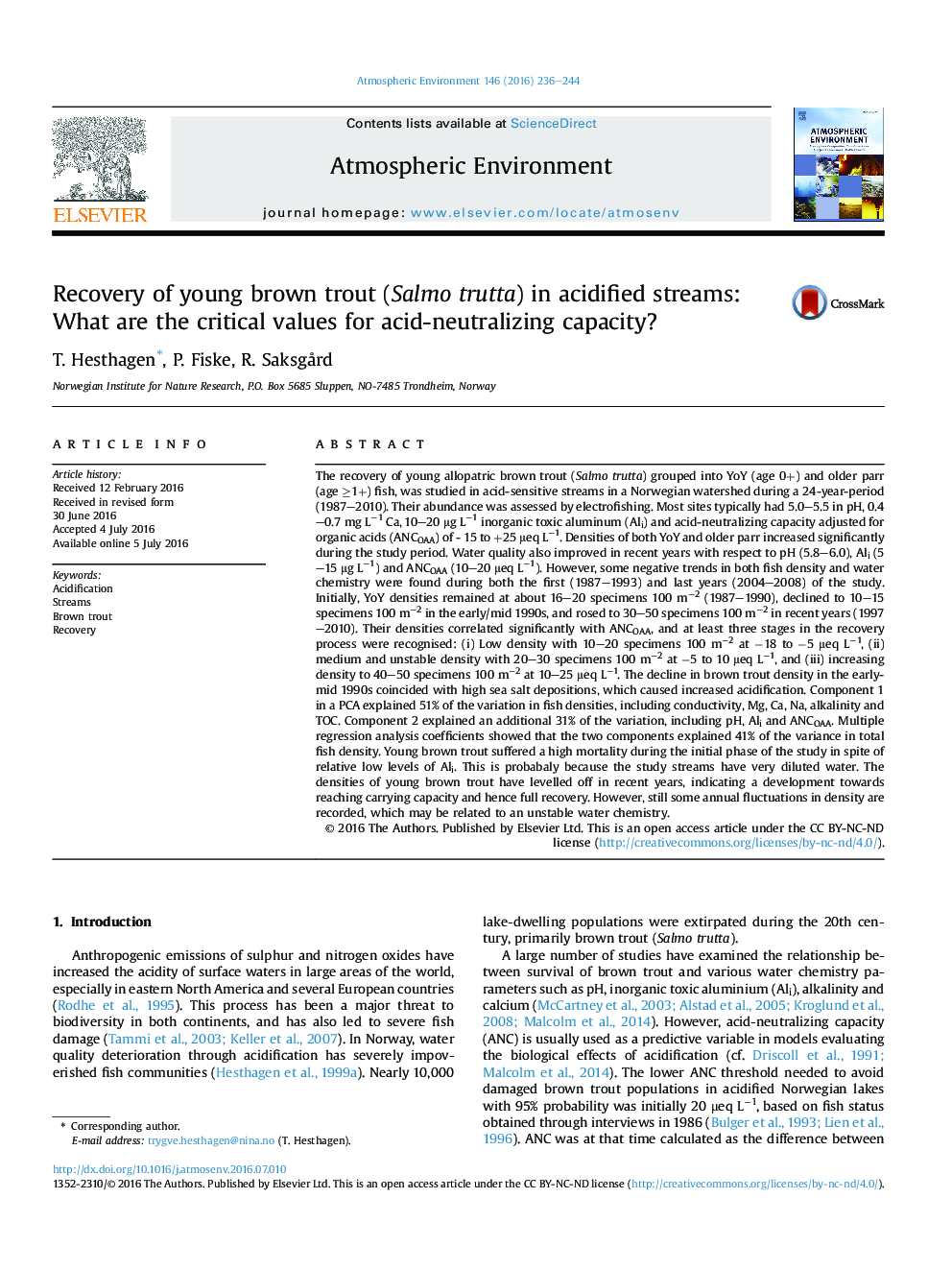| کد مقاله | کد نشریه | سال انتشار | مقاله انگلیسی | نسخه تمام متن |
|---|---|---|---|---|
| 5753278 | 1620328 | 2016 | 9 صفحه PDF | دانلود رایگان |

The recovery of young allopatric brown trout (Salmo trutta) grouped into YoY (age 0+) and older parr (age â¥1+) fish, was studied in acid-sensitive streams in a Norwegian watershed during a 24-year-period (1987-2010). Their abundance was assessed by electrofishing. Most sites typically had 5.0-5.5 in pH, 0.4-0.7 mg Lâ1 Ca, 10-20 μg Lâ1 inorganic toxic aluminum (Ali) and acid-neutralizing capacity adjusted for organic acids (ANCOAA) of - 15 to +25 μeq Lâ1. Densities of both YoY and older parr increased significantly during the study period. Water quality also improved in recent years with respect to pH (5.8-6.0), Ali (5-15 μg Lâ1) and ANCOAA (10-20 μeq Lâ1). However, some negative trends in both fish density and water chemistry were found during both the first (1987-1993) and last years (2004-2008) of the study. Initially, YoY densities remained at about 16-20 specimens 100 mâ2 (1987-1990), declined to 10-15 specimens 100 mâ2 in the early/mid 1990s, and rosed to 30-50 specimens 100 mâ2 in recent years (1997-2010). Their densities correlated significantly with ANCOAA, and at least three stages in the recovery process were recognised: (i) Low density with 10-20 specimens 100 mâ2 at â18 to â5 μeq Lâ1, (ii) medium and unstable density with 20-30 specimens 100 mâ2 at â5 to 10 μeq Lâ1, and (iii) increasing density to 40-50 specimens 100 mâ2 at 10-25 μeq Lâ1. The decline in brown trout density in the early-mid 1990s coincided with high sea salt depositions, which caused increased acidification. Component 1 in a PCA explained 51% of the variation in fish densities, including conductivity, Mg, Ca, Na, alkalinity and TOC. Component 2 explained an additional 31% of the variation, including pH, Ali and ANCOAA. Multiple regression analysis coefficients showed that the two components explained 41% of the variance in total fish density. Young brown trout suffered a high mortality during the initial phase of the study in spite of relative low levels of Ali. This is probabaly because the study streams have very diluted water. The densities of young brown trout have levelled off in recent years, indicating a development towards reaching carrying capacity and hence full recovery. However, still some annual fluctuations in density are recorded, which may be related to an unstable water chemistry.
Journal: Atmospheric Environment - Volume 146, December 2016, Pages 236-244